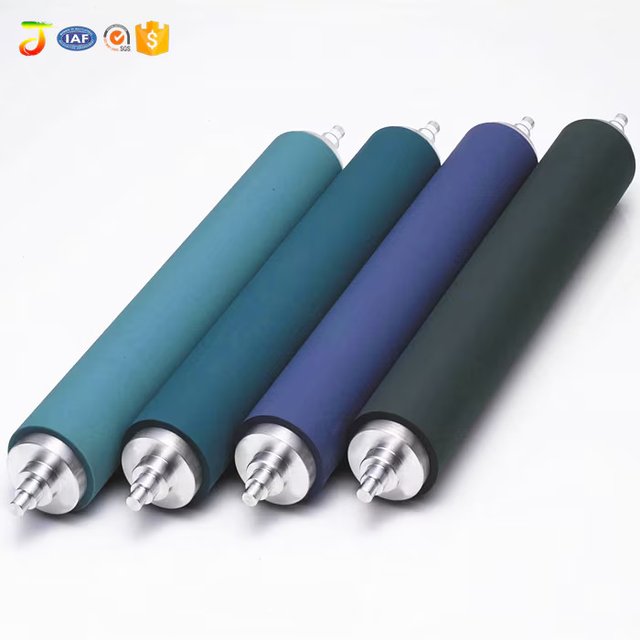What Are Gravure Printing Rollers and How Do They Improve Print Quality
In the world of high-speed and high-quality printing, gravure printing rollers play a vital role. Known for their precision, consistency, and ability to produce detailed images, gravure rollers are widely used in industries such as packaging, decorative printing, and flexible materials. Their unique design and functionality make them a preferred choice for achieving excellent color depth, smooth gradients, and long production runs without compromising quality.
This article explores what gravure printing rollers are, how they work, and how they enhance overall print quality in industrial applications.
1. Understanding Gravure Printing Rollers
Gravure printing, also known as rotogravure, is an intaglio printing process where images are engraved into a cylinder or roller. The engraved areas (called cells) hold ink, while the non-engraved areas remain free of ink. As the roller rotates, it transfers the ink from these recessed cells directly onto the printing substrate—such as paper, foil, film, or plastic.
Gravure printing rollers are typically made of a steel base with a copper or chrome-plated surface. The image to be printed is engraved into this surface using laser or electro-mechanical engraving methods. Each engraved cell’s size and depth determine how much ink is transferred, allowing for precise control over color density and tonal variations.
This process enables gravure printing to produce consistent, high-resolution images at high speeds—ideal for applications like food packaging, magazines, wallpaper, and gift wraps.
2. Key Components and Structure of Gravure Rollers
A gravure printing roller is composed of several important layers and components:
- Steel Core: Provides mechanical strength and stability to withstand high printing pressures.
- Copper Layer: A smooth, easily engravable layer that holds the design cells.
- Engraved Cells: Microscopic depressions on the roller surface that store and transfer ink.
- Chrome Plating: A protective outer coating that resists wear, corrosion, and ink abrasion.
Each layer plays a critical role in ensuring the roller maintains precision, durability, and consistent ink transfer across long print runs.
3. How Gravure Rollers Enhance Print Quality
The precision and design of gravure printing rollers make them one of the most effective tools for achieving superior print quality. Here’s how they enhance printing performance:
a. High-Resolution Detailing
The engraving process allows rollers to hold thousands of tiny ink cells per square inch. This enables the production of sharp images, smooth gradients, and fine text details that other printing methods may struggle to reproduce.
b. Consistent Ink Transfer
Each engraved cell on the roller transfers a controlled amount of ink, ensuring even color coverage and minimal variation throughout long print runs. This is especially valuable in packaging and product labeling, where consistency is essential.
c. Rich Color and Depth
The ability to control ink volume at a microscopic level results in vibrant, deeper colors and smooth tonal transitions. Gravure printing excels at producing high-gloss finishes and photographic-quality images.
d. Durability and Long Print Runs
Because of their chrome-plated surfaces and robust construction, gravure rollers can handle millions of impressions before requiring replacement. This makes them ideal for mass production, reducing downtime and overall costs.
4. The Role of Maintenance in Roller Performance
Maintaining gravure rollers is essential to ensure long-term performance and print quality. Over time, ink residues, paper dust, or solvent buildup can affect cell capacity and cause uneven printing.
To maintain optimal results:
- Regularly clean the roller surface using recommended solvents.
- Inspect for cell damage, wear, or corrosion.
- Store rollers in controlled environments to prevent oxidation.
- Schedule periodic re-chroming or re-engraving to restore performance.
- Proper care not only extends roller life but also ensures consistent ink transfer and reduced print defects.
5. Relationship Between Gravure and Other Rollers
While gravure rollers are essential for ink transfer in intaglio printing, other rollers—like the printer rubber roller—play supporting roles in feeding materials, controlling pressure, or assisting ink distribution in various printing systems. Together, these components form an integrated mechanism that ensures smooth operation, precise color registration, and excellent print output.
The combination of gravure and rubber rollers provides the balance between precision and flexibility required in today’s printing technology.
Conclusion
Gravure printing rollers are the backbone of precision printing systems. Their detailed engraving, durable structure, and controlled ink transfer allow for outstanding color accuracy, image sharpness, and long-term reliability.
Whether used in packaging, decorative printing, or product labeling, these rollers ensure that every print maintains consistent quality—even at industrial speeds. By investing in high-quality rollers and proper maintenance, businesses can achieve greater efficiency, reduced waste, and superior visual results across every project.
